See all "Tampons" Section Topics
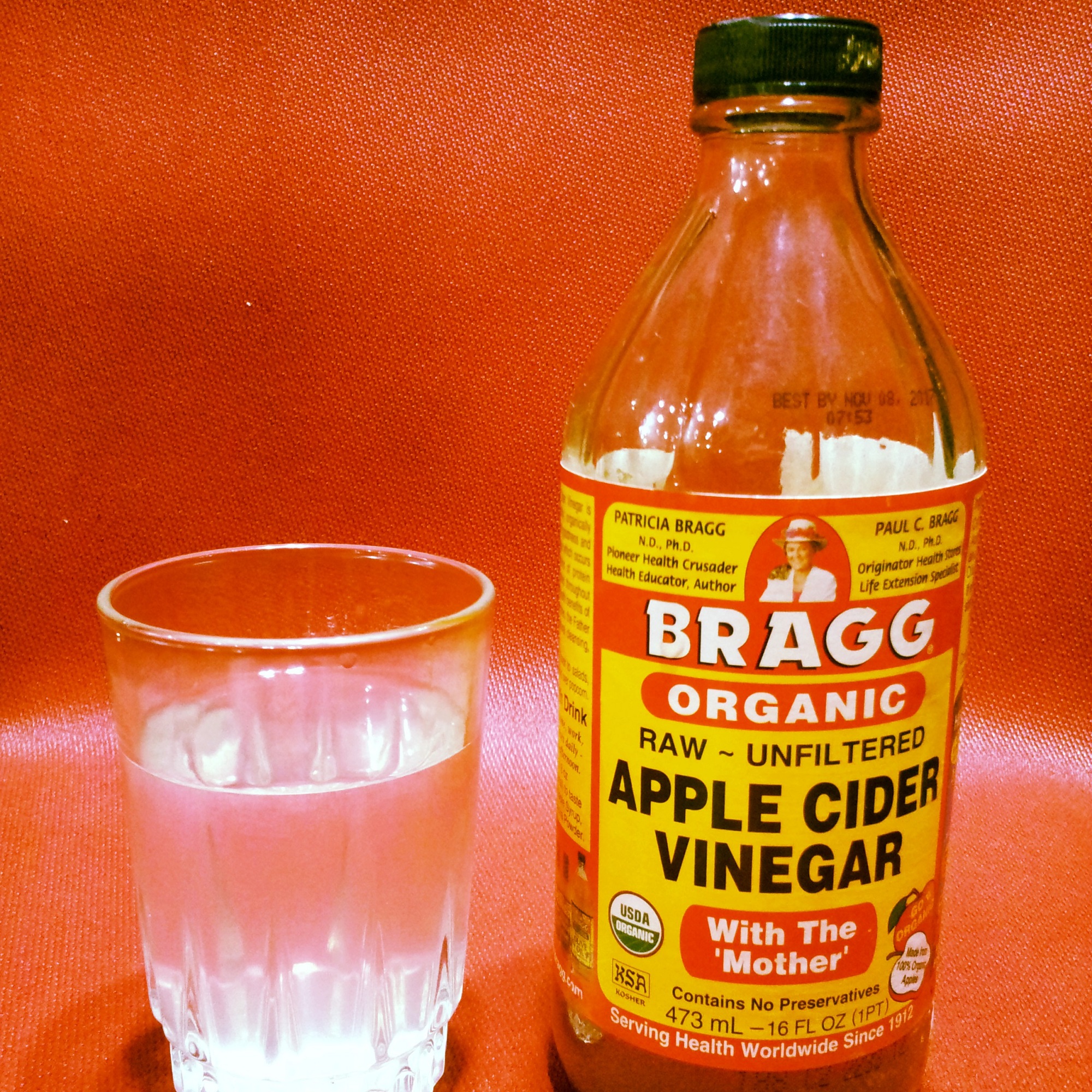
It is true that apple cider vinegar (ACV) will inhibit and kill Candida. Candida in the genus of fungi that causes all yeast infections. Candida albicans (C. albicans), the most pathogenic of the genus, causes about 90% of all vaginal yeast infections (Marchaim, Dror, et al.; 2012). As research indicates (and will be discussed later), you will need about a 0.25% concentration of ACV to arrest the growth of Candida. And, to kill this yeast, you will need about a 0.5% concentration of ACV. These concentrations of ACV may irritate the vagina if you use them with a tampon too long or too frequently. But, an apple cider vinegar tampon for yeast infections is a good idea—if used safely.
One thing to remember about ACV, is that it is quite acidic. ACV contains acetic acid; which is the natural acid in vinegar. If you use undiluted ACV on a tampon, and insert it, it will eventually cause chemical burns to the vaginal skin. Even ACV, used frequently on the body skin, will cause chemical burns to occur. Vinegar is strong stuff, and you never want to use undiluted ACV with a tampon in the treatment for yeast infections—or any other vaginal infection. It is just too harsh.
As we will discuss, diluting the ACV down to a safer concentration is what you need to do when you want to use it in conjunction with a tampon. Low concentrations of ACV should be safe to use intra-vaginally; and, a tampon is a great way to deliver the ACV to the infected area within the vagina. But, at first, you should limit the time that the tampon is in to just an hour or two. If you do not notice any adverse effects, you can increase the duration of time you leave the tampon in. Again, just be careful, if you notice any irritation you should discontinue using the diluted ACV tampon immediately.
The strength of ACV you employ is also a critical factor to consider. It may be that it will be very difficult to find any brand of ACV that has a higher acidity content than 5%. Most vinegars at the store (such as white vinegar) will have a 5% acidity. Also, expensive vinegar—such as Bragg Organic Raw Apple Cider Vinegar—may not be necessary. Regular, cheap ACV may be just as comparable in its treatment of a yeast infection as the expensive variety. The reason for this, is the therapeutic ability against Candida is likely derived merely from the acidity of the vinegar. And, all vinegars are acidic!
For more information about the general use of ACV for Candida, feel free to peruse this article: Apple Cider Vinegar for Yeast Infection.
A 1/2 Day & Yeast is Gone!
Linda Allen suffered from yeast infections for years. Through researching natural medicine & Candida, she found an efficacious solution!
Linda is one expert you want on your side! Let her show you how to get rid of a superficial yeast infection in just 12 hours; AND, keep it gone!
A 60-day, 100% money back guarantee is provided.
Visit Official Site!Studies Relating to ACV & Yeast Infections
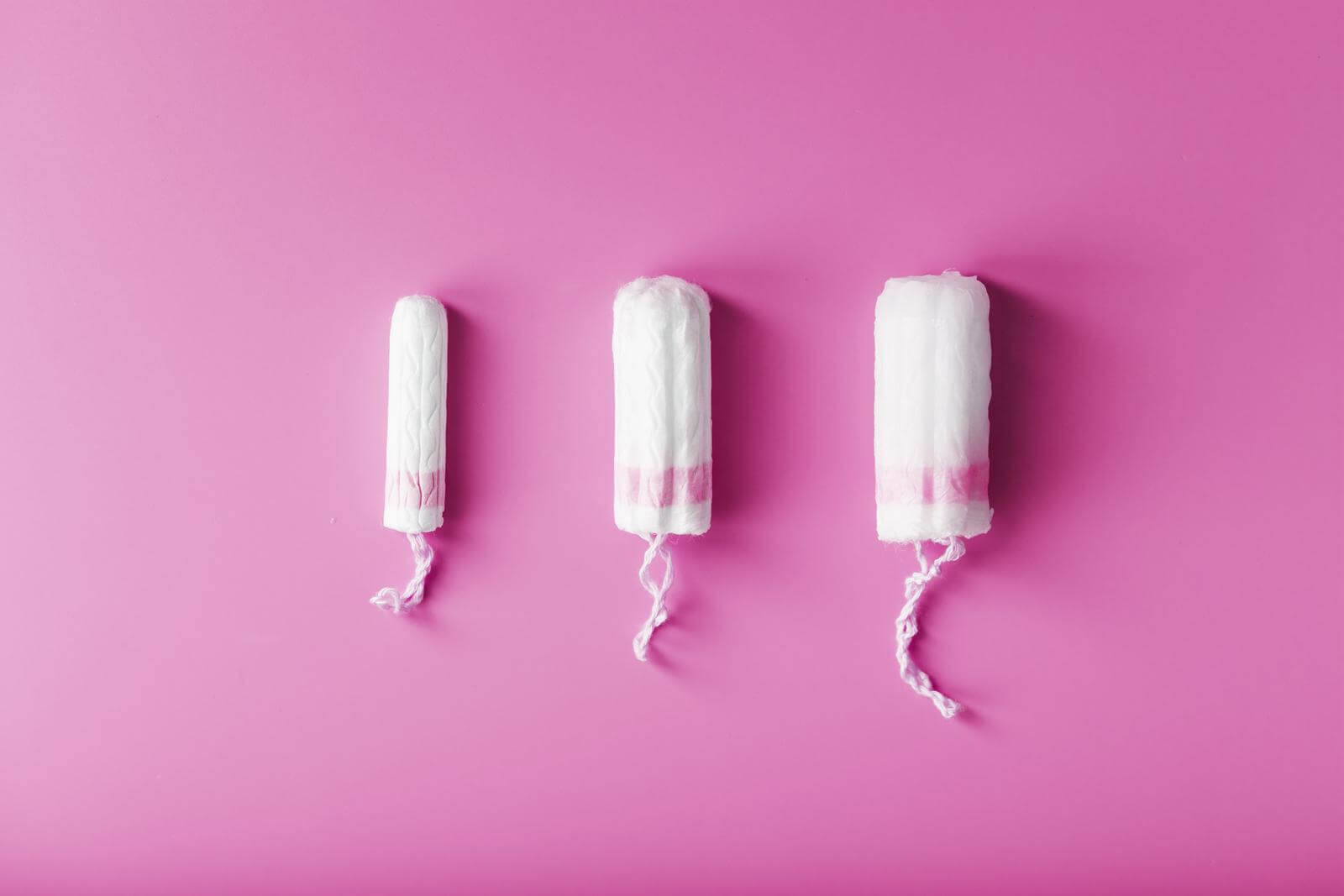
The first study we will look at, published in the Journal of Prosthodontics [24.4 (2015): 296-302], looked at how well ACV would inhibit and kill Candida species. The study states that because of the high content of organic acids with antimicrobial ability, vinegar is used with food as a preservative; as it inhibits fungal growth on vegetables. It is also utilized in folk culture for the treatment of wounds by inhibiting the growth of bacteria and fungi via its medicinal properties. The study also stated that because of ACV’s low cost, low toxicity, and ease of use their research was done to evaluate its in-vitro antifungal ability on Candida species.
The study tested 5 different strains of C. albicans and 3 different strains of C. tropicalis against ACV to determine ACV’s minimum inhibitory concentrations (MIC; the lowest concentration that can arrest growth) and minimum fungicidal concentrations (MFC; the lowest concentration that will kill a fungus) for these yeasts. The logic behind testing C. albicans and C. tropicals, as stated by the study, was due to these species being the most prevalent in oral fungal infection (oral yeast infections are sometimes referred to as oral thrush).
The study found the MIC for all the tested species of Candida was 2500 µg / mL (micrograms / milliliter). This is an effective concentration of 0.25%; which is a much easier figure to conceptualize. Concerning the MFC of ACV, the study found that it ranged from 2500 µg / mL to 5000 µg / mL (0.5%); except for one strain of C. tropicalis. This one strain of C. tropicalis had an MFC of 10,000 µg / mL (1.0%). Thus, we can see that all the tested strains of C. albicans and C. tropicalis were killed by a 1% concentration of ACV.
Concerning the killing time of ACV against a strain of C. albicans, the study conducted a test and related this information in a chart. This chart is shown below, and was taken from the study. The chart shows the microbial death curve (how much cell killing occurred over time). The study used one strain of C. albicans and tested it against varying concentrations of ACV. These concentrations of ACV were the MIC, twice the MIC, and four times the MIC. The ACV was allowed to be in contact with this yeast for 0, 30, 60, 120, and 180 minutes. The growth of the C. albicans strain cultures were then examined after their exposure to ACV concentrations for given time frames.
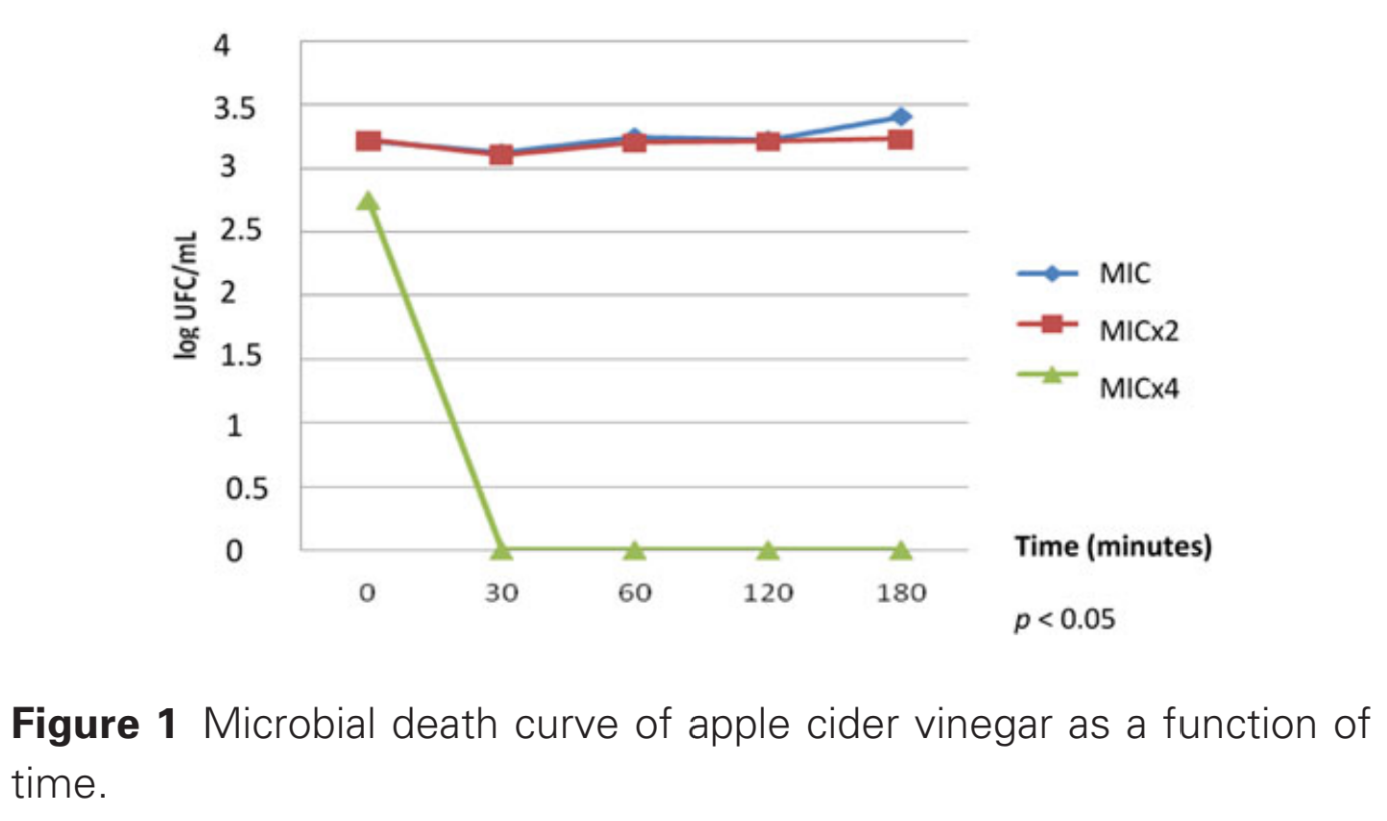
The next study examined relates a case report about a 32 year old woman who suffered severely from a Candida infection. This study was published in Alternative Therapies in Health and Medicine [23.7 (2017)]. The woman was married and for 5 entire years suffered from itching, vaginal discharge with a foul odor, genital area pain, and infertility. This woman was diagnosed with a chronic vaginal Candida infection.
A detailed history of the woman showed that she had been examined by 6 physicians and used 7 antifungal treatment regimens previously. The woman stated that she had to change underwear and pads frequently. The woman was also unable to properly engage in sexual intercourse due to bleeding and dyspareunia (painful or difficult sexual intercourse). The woman reported that this obstruction to sexual activity hurt her relationship with her husband.
This woman went to a physician and underwent testing for cancer and immune deficiency; yet, all the tests showed negative results for these conditions. The doctor prescribed her fluconazole and a vaginal douche with boric acid (find out more about using boric acid for Candida here: Boric Acid for Yeast Infections). While on this treatment protocol, the woman experienced some relief for 20 days. However, her symptoms would end up reoccurring.
The woman finally enlisted the help of a physician who recommended using ACV to clear up her infection. The physician suggested a vaginal douche with ACV twice a day for 4 months. The douche was made with 20 mL of ACV (which contained 5% acetic acid—all vinegar has acetic acid in it) in one liter of water. The woman did not undergo any medical therapy while she used the douche; and, her vaginal yeast infection totally disappeared. The study reports the woman eliminated her yeast infection using just this ACV douche.
Another study looked at ACV and how it interacted with Candida. The research was published in Scientific Reports [8.1 (2018): 1-12].The goal of the study was to investigate the antimicrobial ability of ACV on various microbes; among these microbes tested was C. albicans. ACV composed of 5% acid was tested at various concentrations against C. albicans. The study reports that the minimum concentration required to stop the growth of C. albicans was 250 µg / mL (0.025%) of ACV. Additionally, the research found that ACV was able to inhibit the growth of E. coli at 62 µg / mL (0.0062%) and S.aureus at 125 µg / mL (0.0125%).
Another study we will examine was conducted for an academic dissertation. This dissertation was a research report submitted to the Faculty of Health Sciences, University of the Witwatersrand, Johannesburg by Tarana Garach [2018]. Garach’s study used acrylic plates on which C. albicans was grown. The plates were divided into 5 groups of 6 acrylic plates each. These plates were then put into various disinfecting agents; among these agents was ACV. 6 plates were placed into a bath with a concentration of 5% ACV. After the plates were put into the bath, they were allowed to incubate at room temperature for 3 different time frames: 30 minutes, 1 hour, and 8 hours. The plates were then tested to determine how much C. albicans was viable. The procedure was repeated 3 times.
The study reported the percentage of C. albicans the 5% ACV solution killed at various time intervals. Contact with the 5% ACV for 30 minutes resulted in about 88.85% of the yeast killed. Contact with the 5% ACV for one hour killed about 94.48% of the yeast. Contact with the 5% ACV for 8 hours resulted in 100% of the yeast being killed. Thus, this research indicates that ACV kills a vast majority of C. albicans quickly; but, can take up to 8 hours to kill all the C. albicans it is in contact with.
Eliminate Bacterial Vaginosis & Vaginal Odor
Jennifer O’Brien is one prominent expert on BV that knows how to get rid of vaginal odor. BV is a common infection that you don’t have to put up with.
Jennifer will show you how to naturally eliminate vaginal odor in just 3 days.
A 60-day, 100% money back guarantee is provided.
Visit Official Site!Literature Discussing ACV & Candida
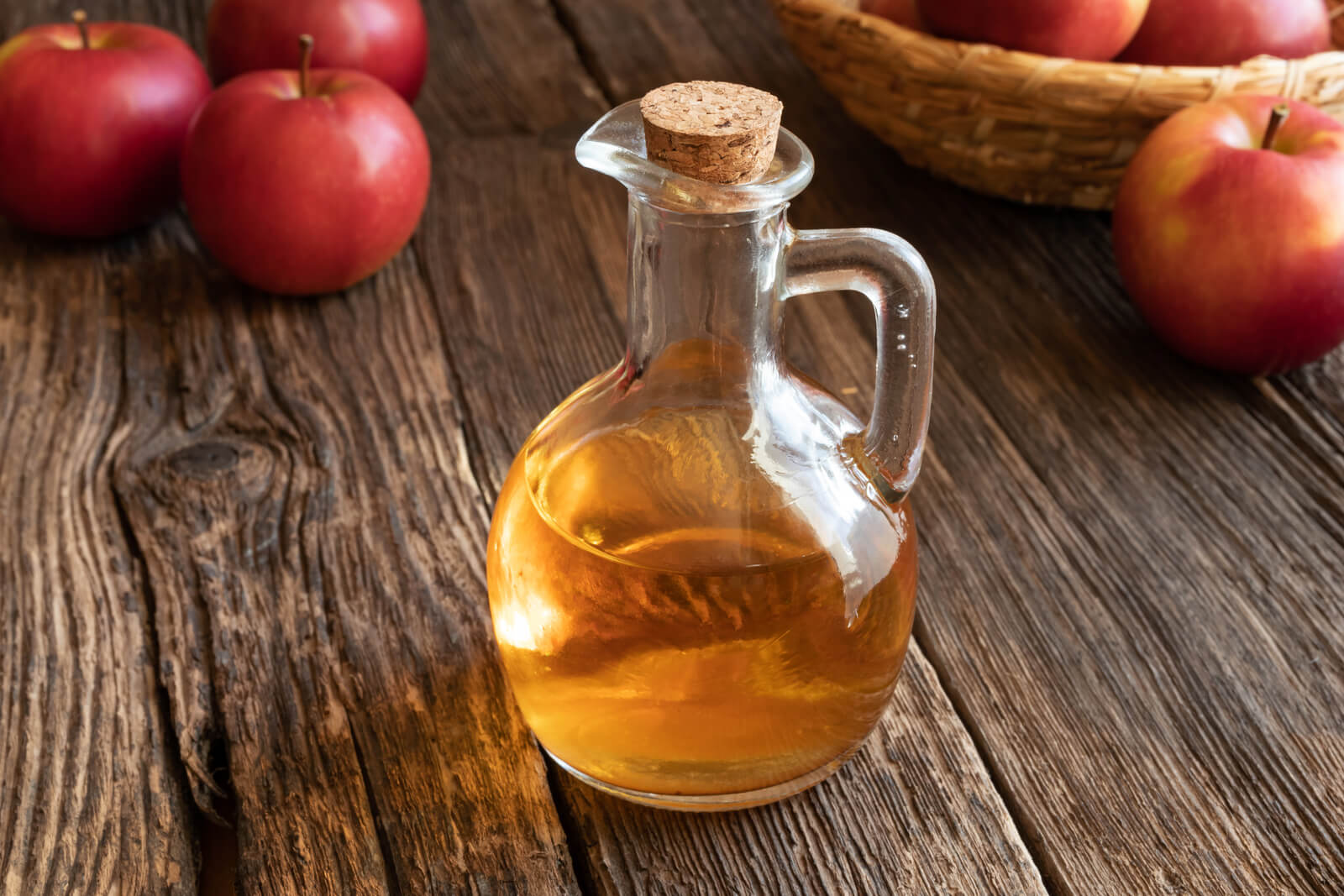
Claire Georgiou, in her book The Apple Cider Vinegar Cleanse, states that Candida can cause health problems such as bad breath, digestive problems, urinary tract infections, and a lack of energy. In this book, Georgiou suggests using apple cider vinegar with a Candida cleanse. Simply take 1 tablespoon of ACV three times a day with your Candida cleanse.
Christopher Hobbs and Kathi Keville recommend using ACV to treat vaginal infections in their book Women’s Herbs, Women’s Health. The authors recommend using ACV as a preventative measure as well. The book states that you should use a douche of diluted ACV to normalize the vagina’s pH; which will help to prevent the overgrowth of pathogenic microbes. The authors suggest making a douche by diluting 4 tablespoons of vinegar with 2 cups of water. The authors also state that some antimicrobial herbal vinegars would be good to use. This book suggests to douche once a day during the occurrence of an infection. For maintaining your vaginal health, the authors suggest to only douche once or twice a month.
The late Dr. James Duke, in his book The Green Pharmacy, recommends using ACV for vaginal infections. Dr. Duke relates the advice of his then friend Jeanne Rose, an herbalist and author of several good herb books. Dr. Duke says Rose suggests using ACV baths and douches help to restore the natural acidity of the vagina. And, a normal acidic vaginal pH helps to allay a bacteria associated with BV, yeast infections, and trichomoniasis. The book states that ACV is an old folk remedy that many medical doctors also recommend for several types of vaginitis. To use ACV, Dr. Duke suggests adding 3 cups of the vinegar to a hot bath, and soaking in the bath for at least 20 minutes.
Clair Goodall: Author & Nature Lover
Clair Goodall is a bee-obsessed natural medicine convert from Minnesota. She is one expert you might want to know more about!
Clair will help you protect you and your family from toxic products and chemicals and help you discover solutions from nature.
Also, Clair’s book is backed by a 60-day, 100% money back guarantee
Visit Official Site!Making an Apple Cider Vinegar Tampon for Yeast Infection
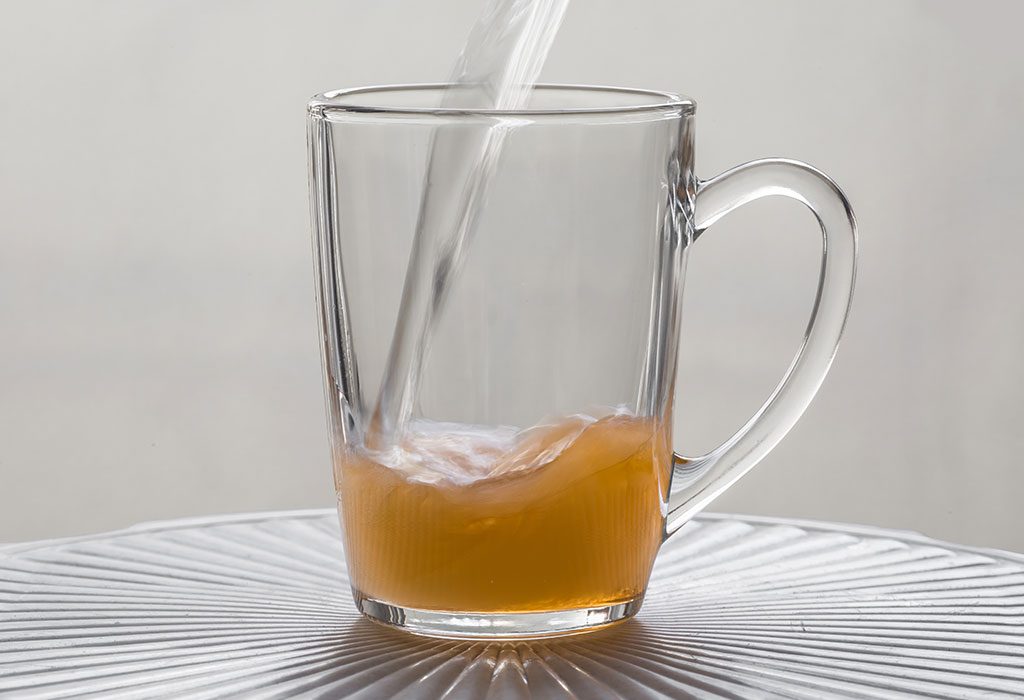
As the Alternative Therapies in Health and Medicine [23.7 (2017)] study (about the 32 year old woman with a seemingly incurable vaginal yeast infection), a dilution of 20 mL of ACV per liter (a 0.02% concentration) was used in the douche. The woman used the douche twice a day for 4 months. This concentration of ACV is likely going to not cause irritation or chemical burns at all; and, should be safe to soak a tampon in. However, it could take a considerable amount of time for the ACV tampon to effectively bring about the cure of a yeast infection.
The book Women’s Herbs, Women’s Health recommended using 4 tablespoons of ACV with 2 cups of water (a 0.125% concentration) as a vaginal douche. It may be that instead of using this just as a douche, you can soak a tampon in it. This low concentration may not cause any irritation or chemical burns when you use it with a tampon intra-vaginally. And, it could bring about a cure for a yeast infection in a more alacritous manner. As research indicates, you will need about 0.025% concentration of ACV to inhibit the growth of the yeast. And, to kill the yeast, you may need about a 0.5% concentration of ACV.
You can choose to try a 0.5% ACV concentration on the tampon; but you may want to leave the tampon in for a short duration of time in case your skin reacts poorly to the elevated level of ACV. If you do not notice any irritation to the vaginal skin when using the 0.5% ACV tampon, you can always try using it again. Just make sure you safely, and slowly, raise the duration of time you use the tampon for; to ensure you do not irritate the vagina. You may want to use a strong ACV tampon, such as this, intermittently throughout the week; e.g., every other day. And, make sure you discontinue using the ACV tampon if you notice vaginal irritation or burning.
When you buy ACV, make sure you get ACV with an acidity of 5%. Most vinegar sold at the store likely has an acidity of 5%. Just be sure your vinegar’s label states the acidity; and, never use one with greater than 5% acidity.
Potential Side Effects of Vinegar Use
A study, published in Folia Microbiologica [64.2 (2019): 133-141], states that vinegar use can carry some risk. According to the research, using vinegar might cause harmful skin irritation. Chemical burns to the skin can occur as well.
Another study relates the case of a young woman who developed slight burns after using apple cider vinegar on her nose. The study was published in The Journal of Clinical and Aesthetic Dermatology [8.6 (2015): 50]. The young woman had apparently read on the internet to use ACV as a mole removal remedy; however, it appears the advice given was incorrect. The woman applied several drops of ACV daily for three days to a nevi (a mole or birthmark on the skin) on her nose. It also may be the young woman she used some type of dressing to cover the mole after the ACV application. This resulted in a small chemical burn on the woman’s nose.
After viewing the picture of this chemical burn, provided by the study, it was clear the chemical burn was very, very small. It is odd how this study uses vernacular that made it sound like this was a serious situation, yet provides a picture showing a very tiny chemical burn.
I would imagine teenagers with acne do far more damage to their skin in irrational use of cleaning agents and remedies (be it read on the internet or purchased from the store) than this very small chemical burn. In fact, I hate to say it when the study denounced it so ardently, the picture the study presented looks like the internet remedy actually worked to some extent; as the chemical burn is so small! I know—it sounds bad!
However, despite any levity in this discussion of side effects of ACV, this journal paper does prove that ACV can cause chemical burns. Remember, the young woman only used a few drops of ACV a day. This undiluted vinegar did cause chemical burns; and, the skin on the nose is going to be much less sensitive than the skin of the vagina. Consequently, you really could burn your vagina with undiluted ACV. Make sure you always dilute ACV before you use it on your body; and, especially if you use it with a tampon.
A Safe, Natural, 12 Hour Cure for Yeast Infections

Yeast infections are an occurrence that affect men and women; although, it appears women are much more prone to developing one of these infections. Some women also find themselves suffering from recurrent vaginal yeast infections. These women may not be able to find much help from ordinary medical protocols. One woman, who suffered from chronic yeast infections, was Linda Allen. Allen not only had a problem with localized infections, but Candida had invaded her body as well—causing a host of unusual health problems.
Allen suffered for about 12 years with recurrent yeast infection and “Candida syndrome.” Candida syndrome can refer to the unusual health problems that an excess amount of yeast in the body can cause; such as unexplainable fatigue, feeling “foggy,” or “spaced out.”
Linda sought the advice of medical doctors for a solution to her problem; but only got short term cures. When she first got a yeast infection, she found that the drugs she received from the doctor would cure the yeast infection; yet, it was only a matter of time before she would develop another Candida infection. All the while she was struggling with recurrent Candidiasis, her health was declining. Linda felt terrible, and spent a great deal of money and time trying to get better. Nothing seemed to work. Linda was even put on allergy medication, but this too did not solve her problems.
Linda’s life changed when she visited a naturopath to get help with her poor health. The naturopath knew exactly what was causing Linda’s poor health: an overgrowth of Candida in her body. Although the naturopath did not offer a permanent solution, they did put her on the right track. Afterwards, Linda would start reading a great deal about natural medicine and Candidiasis. She even tried quite a few purported solutions for her problem.
Eventually Linda developed a natural system to heal her body and grant her freedom from Candida. Linda would spend about a year refining this system before she gave it a try on herself. After she did employ her new natural system, she found that her recurrent yeast infections stopped completely. And, as time progressed, she found that her health was being restored. Eventually, it was certain; Linda had naturally rid her body of Candida and she was free from the terrible bad health that had plagued her life for so long.
Linda’s general practitioner also took a look at her new system and thought she really might have something. The general practitioner suggested showing her system to others; and Linda did just that. It wasn’t long before Linda saw the same results she had attained in those who gave her natural system a try.
Linda has since written an entire book detailing her natural system to get rid of Candida. Linda also includes a novel approach to dealing with outward yeast infections (such as a genital infection). This approach will naturally get rid of a yeast infection in just 12 hours time; it is that powerful. It may be that your yeast infection is caused by an excess of yeast in your body; e.g., yeast that has invaded the intestines. Linda’s methods will allow you to get rid of this reservoir of Candida so you can effectively, naturally stop yeast infection recurrence.
Linda’s book is published by a large digital publisher that is based in the United States. The company is owned by the large U.S. firm Keynetics Incorporated; and is currently based in the state of Idaho. Linda’s publisher makes the purchasing process very safe, and easy to do. And, Linda’s publisher ensures the quality of her book with a 60 day, 100% money back guarantee. If you decide to try Linda’s book, and you find it unsatisfactory for some reason, you can get a prompt, full refund of all your money. And, since Linda’s treatment will take about half a day to clear up a yeast infection, 60 days should be more than enough time to verify the quality and efficacy of Linda’s natural system.
To learn more about Linda’s personal story, see reviews of people who tried her system, or to find out more about her book, you can get more information at Linda Allen’s website.
Author: Mr. Nicholas Gross

Nick Gross is a natural medicine enthusiast who has been researching and writing about natural medicine since 2008. Nick is primarily a web developer but also researches and authors written and video content about natural health. Nick has a bachelor’s degree in Management Information Systems from the University of Northern Iowa.
Disclaimer
The information on this website is not a prescription for anyone. This information is for informational or educational purposes only, and is not a substitute for professional medical advice or consultations with healthcare professionals.
Affiliate Disclosure
Some of the links provided on this website are affiliate links. When a purchase is made through these links, Candida Hub earns money from commission. This helps to keep the website up and helpful to people for free. Thank you for any support!
Stay Up to Date
If you enjoyed this article, consider following / liking our Facebook page. This page is primarily utilized to alert followers of new articles that are put on Candida Hub. Candida related news is also discussed. While you are there, you can see what has been more recently added to Candida Hub.
SOURCES:
- https://doi.org/10.1097/AOG.0b013e31827307b2 — Marchaim, Dror, et al. "Fluconazole-resistant Candida albicans vulvovaginitis." Obstetrics & Gynecology [120.6 (2012): 1407-1414].
- https://doi.org/10.1111/jopr.12207 — Mota, Ana Carolina Loureiro Gama, et al. "Antifungal activity of apple cider vinegar on Candida species involved in denture stomatitis." Journal of Prosthodontics [24.4 (2015): 296-302].
- https://pubmed.ncbi.nlm.nih.gov/29112940/ — Ozen, B., and M. Baser. "Vaginal Candidiasis Infection Treated Using Apple Cider Vinegar: A Case Report." Alternative Therapies in Health and Medicine [23.7 (2017)].
- https://doi.org/10.1038/s41598-017-18618-x — Yagnik, Darshna, Vlad Serafin, and Ajit J. Shah. "Antimicrobial activity of apple cider vinegar against Escherichia coli, Staphylococcus aureus and Candida albicans; downregulating cytokine and microbial protein expression." Scientific Reports [8.1 (2018): 1-12].
- https://hdl.handle.net/10539/25383 — Garach, Tarana. “Efficacy of different vinegar solutions in removal of Candida albicans from denture acrylic resin.” (Dissertation). Faculty of Health Sciences, University of the Witwatersrand, Johannesburg [2018].
- Google Books — Georgiou, Claire. “The Apple Cider Vinegar Cleanse: Lose Weight, Improve Gut Health, Fight Cholesterol, and More with Nature's Miracle Cure.” St. Martin's Publishing Group [2017]. ISBN: 9781250161192
- Google Books — Hobbs, Christopher; Keville, Kathi. “Women's Herbs, Women's Health.” Book Publishing Company [2007]. ISBN: 9781570671524
- Google Books — Duke, James A.. “The Green Pharmacy: New Discoveries in Herbal Remedies for Common Diseases and Conditions from the World's Foremost Authority on Healing Herbs.” Rodale [1997]. ISBN: 9780875963167
- https://doi.org/10.1007/s12223-018-0652-x — Felix, Thais Chimati, Denise Von Dolinger de Brito Röder, and Reginaldo dos Santos Pedroso. "Alternative and complementary therapies for vulvovaginal candidiasis." Folia Microbiologica [64.2 (2019): 133-141].
- https://www.ncbi.nlm.nih.gov/pmc/articles/PMC4479370/ — Feldstein, Stephanie, Maryam Afshar, and Andrew C. Krakowski. "Chemical Bum from Vinegar Following an Internet-based Protocol for Self-removal of Nevi." The Journal of Clinical and Aesthetic Dermatology [8.6 (2015): 50].







